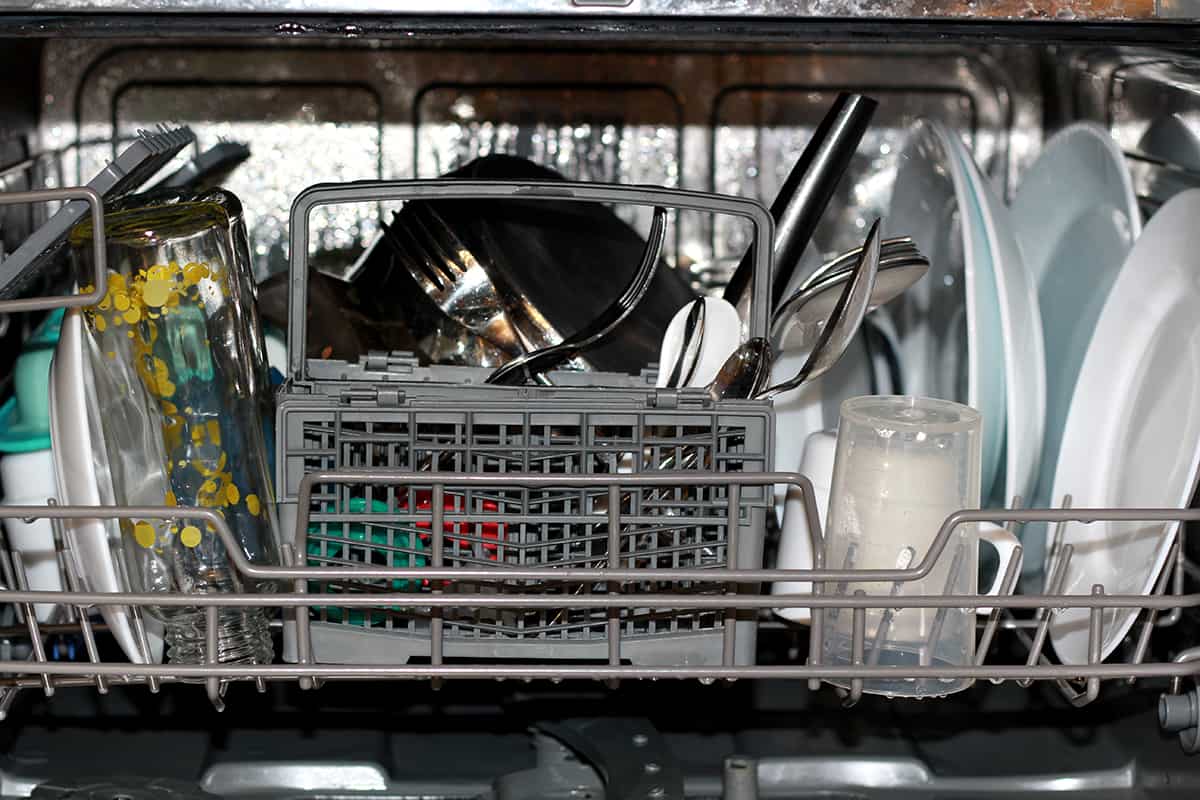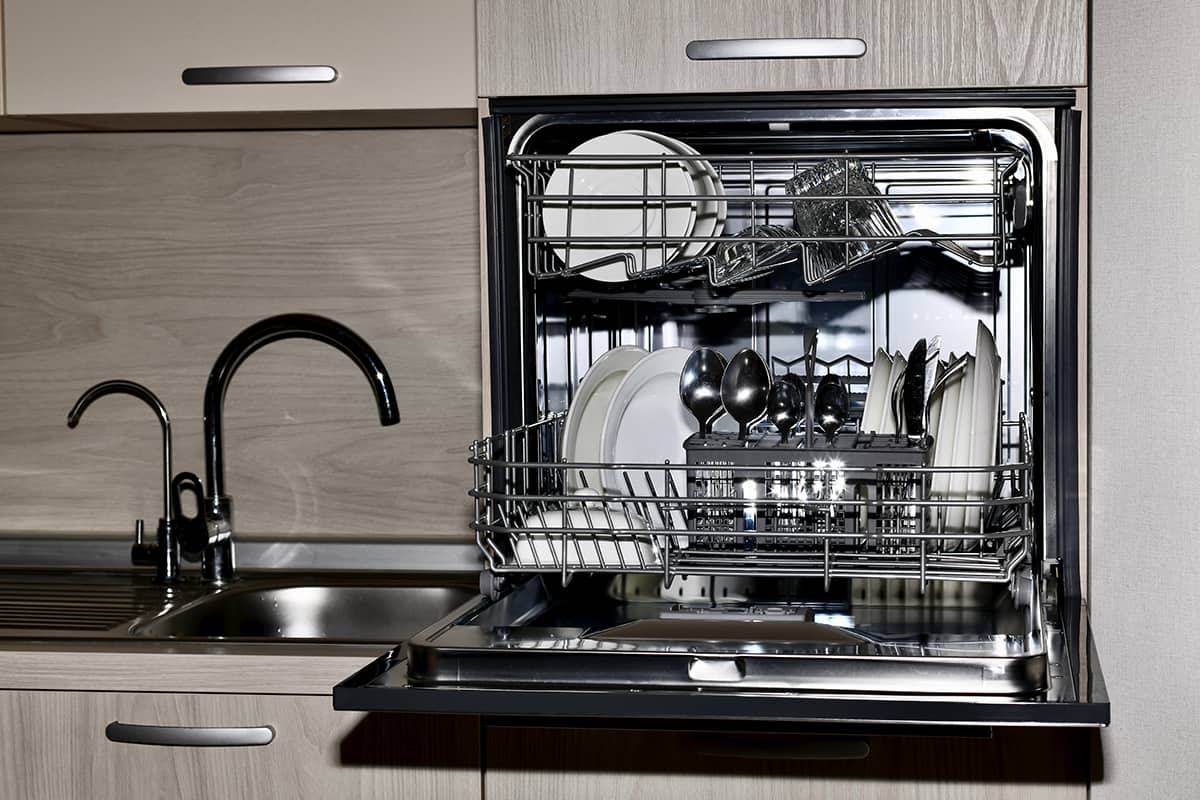There are very few things in this world that are more disgusting than a backed-up sink. The unfortunate reality is that there are several reasons why your sink could become clogged, which you’ll need to diagnose and eliminate right away. But if your sink is clogged, does that mean you can’t run your dishwasher?
A clogged sink is a clear sign that there is an obstruction in the sewer line. Do not run your dishwasher if its drain line is connected to the same sewer line as your kitchen sink.
In this guide, I’ll explain the reasons why a sink can become clogged, why you shouldn’t run your dishwasher in such a scenario, and what you can do to remove the obstruction in your kitchen sink’s sewer line.
Causes for a Clogged Kitchen Sink
If you’re a homemaker, then you probably find yourself spending a significant portion of your day in the kitchen, with a large portion of that time spent in front of a kitchen sink. So, when it becomes clogged, it can completely ruin your day.
But why does a kitchen sink become clogged in the first place? Here are 3 common causes for why this is the case.
1. Hardened oils and grease

How do you dispose of cooking oil? Do you do it the recommended way, or do you pour the fat down the drain? Out of sight, out of mind, right? If you do the latter, then you put your kitchen sink at risk of clogging. When you pour liquid fat down the drain and chase it with cold water, the fat can solidify and cling to the inner walls of the drain line.
2. Expanded starches
There are probably many of you who don’t bother to toss potato, beans, and rice scraps into the garbage. After all, the garbage disposal will break the solids down to manageable bits that go down the drain, right?
You should know that starches expand when they come into contact with water, regardless of the water’s temperature. That baked potato you had a month ago may have expanded to multiple times its size due to improper disposal.
3. Coffee grounds
Unlike instant coffee, coffee grounds do not dissolve in water. What happens when they get wet is that they become heavy and harder to move. When the coffee grounds have settled on the farther side of an S-bend, the water pressure from your kitchen faucet may not be enough to push the coffee out of the way.
Can I Run My Dishwasher If My Sink Is Clogged?
If your kitchen sink is clogged, you might think that washing your dishes in the dishwasher is a good idea. Unfortunately, the opposite is true.
There’s a good chance that your dishwasher, garbage disposal, and kitchen sink are connected to the same sewer line. So, if your kitchen sink is backed up, your dishwasher will not drain. This can lead to standing water inside the dishwasher, resulting in bacteria or mold growth and nose-wrinkling odors.
Is My Dishwasher or Sink Clogged?
While a clogged sink can lead to a backed-up dishwasher, that doesn’t necessarily mean that a clogged dishwasher is indicative of a clogged kitchen sink.
If your dishwasher doesn’t drain water as quickly as it should, you should attempt to locate the obstruction in the dishwasher drain line. You can do this by disconnecting the dishwasher drain line from the sewer line and using a long, skinny object to manually loosen and remove solid debris hidden within.
Another common reason your dishwasher doesn’t drain water properly is that the filter assembly is clogged. Dishwashers come with multi-tiered filters to capture fine and super-fine particles. If you don’t empty the filter assembly regularly, the solids can build up in the screen mesh, preventing water from draining.
How to Fix a Clogged Sink

A clogged sink can be highly annoying to deal with, but removing the obstruction can be quite easy. Here are 5 things you can try to unclog a backed-up sink.
1. Pour boiling water down the drain
- Fill a kettle with water (around 5 cups).
- Heat the water until it comes to a rolling boil.
- Pour the boiling water down the kitchen sink drain.
- Immediately cover the drain with the rubber stopper.
- Wait for 30 seconds.
- Turn on the faucet to test whether or not the obstruction is gone.
If you think the obstruction is farther down the sewer line, try pouring more water (10 to 15 cups) down the drain at a time. This method usually only works for removing hardened oils and grease from the drain line. You’ll have to employ another unclogging method if you’re dealing with expanded starches and coffee grounds.
2. Turn on the garbage disposal
- Bring a kettle of water to a rolling boil.
- Turn on the garbage disposal.
- Let it run for 30 to 60 seconds.
- Pour the boiling water down the kitchen sink while the garbage disposal is on.
- Turn off the garbage disposal.
- Turn on the faucet to test whether or not the obstruction is gone.
Make sure to give the garbage disposal at least 2 minutes of rest for every 60 seconds of work. That way, you don’t run the risk of burning the motor. This method will only work if the obstruction is located inside the garbage disposal. If it’s not, then you’ll need to find another method.
3. Use a plunger
- Fill the sink halfway with hot water from the tap.
- Place a kitchen sink plunger over the kitchen sink drain.
- Pump the plunger up and down repeatedly for 30 to 60 seconds.
- Remove the plunger and wait for the water to drain.
- Repeat steps 3 until the water drains from the sink.
Make sure you use the correct plunger for this job. The plunger should create an airtight seal around the drain hole to ensure the best results. If this method doesn’t work, you still have two more unclogging options left.
4. Use baking soda and vinegar
- Pour 1 cup of baking soda down the drain.
- Immediately chase the baking soda with 2 cups of vinegar.
- Immediately cover the drain with the rubber stopper.
- Let the baking soda and vinegar react for 30 to 60 seconds or until you don’t hear fizzing sounds.
- Pour boiling water down the drain.
Mixing baking soda and vinegar creates carbon dioxide that can break through loosened materials. This method is best applied after you’ve tried the previous unclogging techniques.
5. Snake the clogged drain
Stubborn clogs require force to remove. When push comes to shove, it’s time to whip out your reliable snake plumbing attachment for your power cord. Follow the instructions on the attachment’s package to see how to use it.
Don’t have a power drill with a snake attachment? You can fashion your own using nothing but a wire hanger. Simply straighten the wire hanger and carefully run it through the kitchen sink drain. Move it up, down, and around until you have successfully loosened the debris.
Now, try applying the first (pour boiling water down the drain), third (use a plunger), or fourth (use baking soda and vinegar) unclogging techniques to see if they can permanently remove the obstruction.






